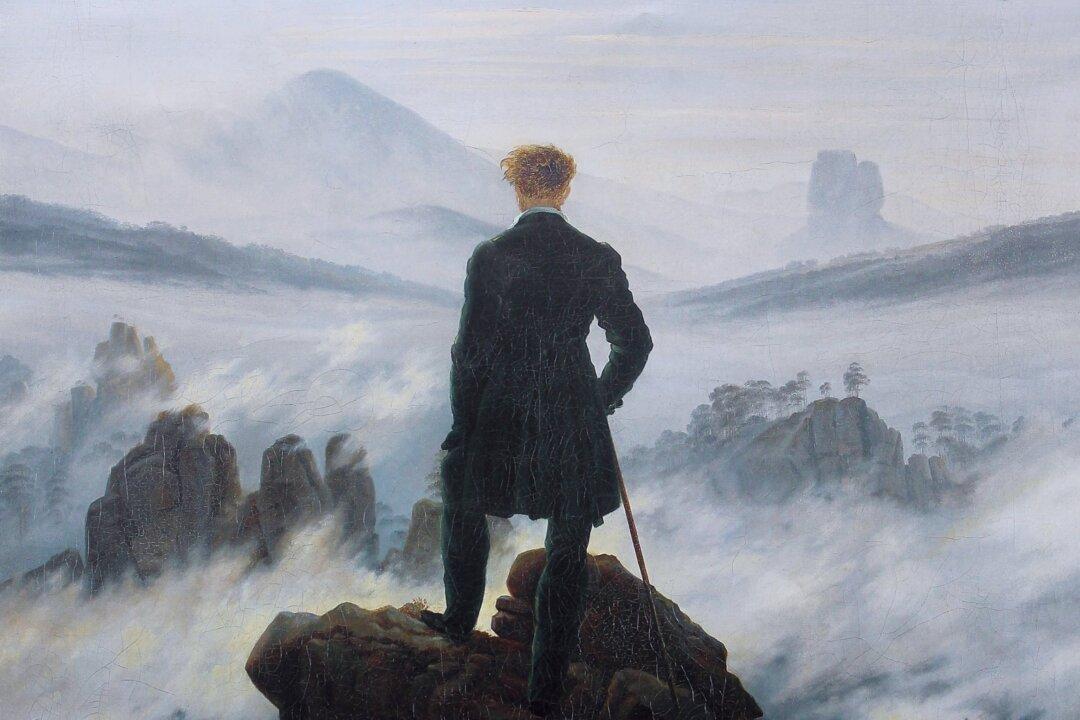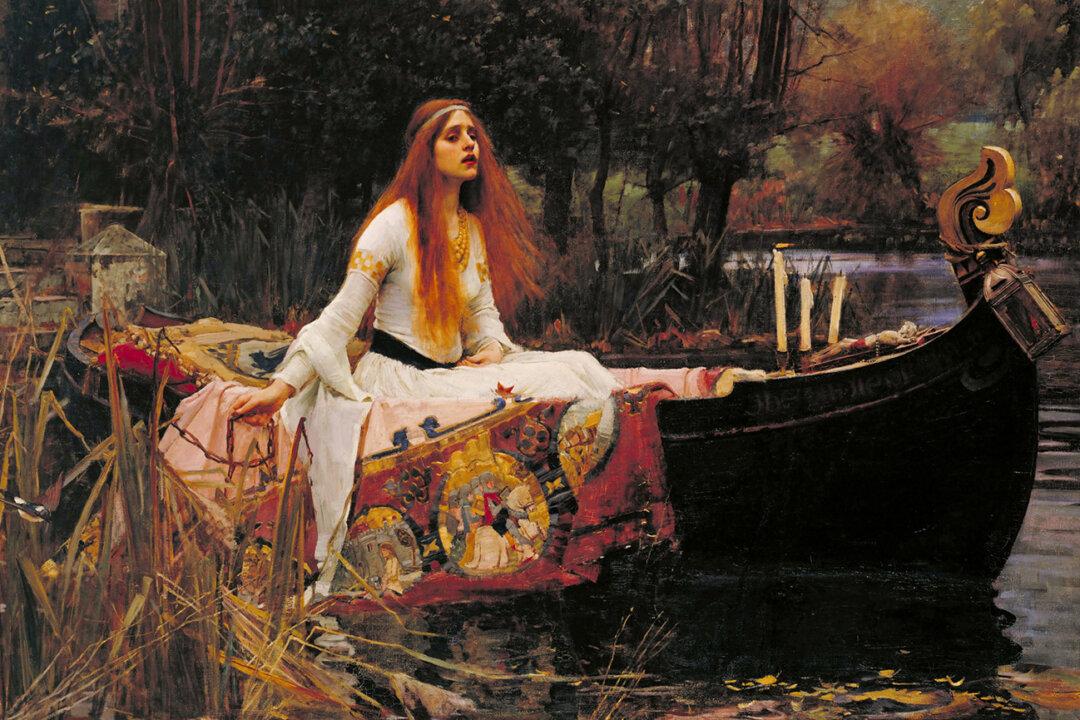If the periods of art ever put forth their most iconic works, Romanticism would surely include “Wanderer Above the Sea of Fog,” the oil painting, circa 1818, by German Romantic artist Caspar David Friedrich.
Like the Romantic period itself, this painting is often called sublime: a word meaning “elevated in dignity” but also “to pass from solid to vapor and back, bypassing the liquid state.” It would be a magically unreasonable experience that Friedrich seems to share with us, as the wanderer atop his mountain beholds an unfolding oneness of jagged peaks and formless fog below.




